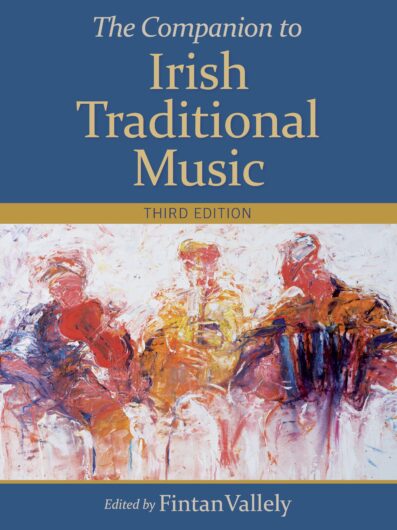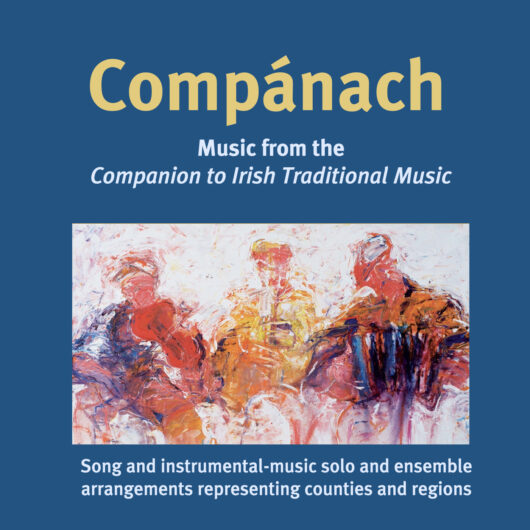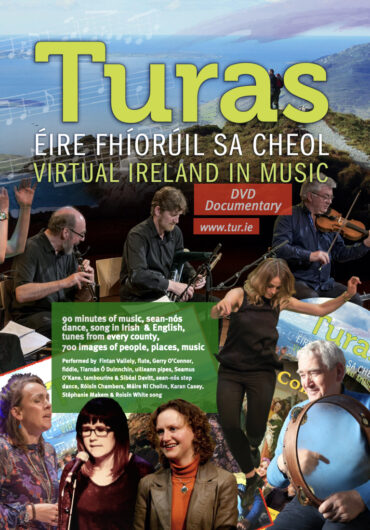Companion to Irish Traditional Music, 3rd edition
To be published on May 21st, 2024
Unique in Irish music, this encyclopedia was first published in 1999, with a major updated edition in both book and digital form in 2011. The twenty-five years since the book's inception have been a period of great social and technological changes for the music scene, particularly in communications, and the thirteen years since the second edition have also been marked by transformations, particularly by the on-line teaching-and-learning and performance which the 2020-22 covid crisis facilitated. The continuing outside-Ireland interest in the music in both performance and learning has created a new cultural diaspora which presents new challenges too.
The profusion of published local and major studies related to the music, the explosion of web-based information, and the normalisation of Irish-traditional music within popular musics which are consumed world-wide has also created high-profile players: the trail blazed by The Chieftains has been widened, heightened and advanced beyond what could not have been imagined by those whose commitment forged the 'revival' through the 1960s, let alone those who formed the lodestone Cork and Dublin pipers' clubs 1898 and 1900, or the ground-breaking Seán Ó Riada himself. Not least, there have been the deaths of many, many formative stylists whose artistic talent has shaped and energised the music we know and play today.
Thus the third edition is not only a thorough update, but includes new topics which involve and are of interest to all who play and listen to the music. Among them is not only consideration of the issues mentioned above, but also a closer look at teaching and learning.
Each county on the island, and Irish communities abroad, is covered with regard to instrumental song, dance and music style and promotion, as is Irish music in Scotland, England, European cities, and the USA. Ever since the first edition, gender has been dealt with as an important issue in opportunity, visibility and commendation, a subject which had already been expanded in 2011. With its coming dramatically to the fore in 2020 it now demands deeper consideration in historical findings and sociological thinking on women in traditional music.
Another dimension of transformations will be given in analysis of the profound roll-of-honour that are the Comhaltas Ceoltóirí Éireann competitions since the the organisation's founding in 1951. This illustrates national, regional, gender and instrument trends, and tendencies in the selection of the top players. First-place winners in the main music and song competitions for all of the 71 years from 1952-2023 are listed.
Related to this is looking at the blossoming of non-competitive, merit awards such as TG4's Gradam, and CCÉ's and SSWC's awards, commercially- and culturally- impelled 'oscars' systems which challenge the public, open adjudicator-panel. The books listings are expanded, including local publications, so too new directions and regrouping in the music - such as the formation of Cruit Éireann in 2016 for the harp - including organisational developments, the consolidation of third-level education structures in music and dance led by IWAMD in Limerick. RTÉ, Radio na Gaeltachta and TG4, and the expansion of Arts Council, Culture Ireland and other funding are also discussed.
This edition also meshes with the performance initiative which grew out of the 2011 volume - the Compánach audio-visual concert and its 2-CD album which have all tune-types and county-by-county music as described in that book. A digital download link for this music is included with the book.
These recordings also link to the DVD - Turas, Virtual Ireland in Music - in which the Compánach music is copiously illustrated with 700 images that the book cannot carry, and which in the digital formats can be paused and replayed for contemplation and discussion, intended as a versatile education tool.
The Companion is the ultimate reference for all players, devotees and students of Irish traditional music, an indispensable reference guide to Ireland’s internationally-celebrated and performed traditional music, song and dance. It is also a comprehensive body of information on the social and geographic aspects of the music, a matter of importance in the field of Irish Studies.
- For a full list of all A-Z entries and word-counts see Entries
- For a list of major topics to which these articles relate see Topics
- For an interim list of referenced people and bands see Index
- For text of the addresses at the launch of the 2nd edition on November 24, 2011, see Companion Launch information and images
- Since 2012 the Companion has been represented in a concert – Companach – which has toured in Ireland, England, Europe and Australia. This concert format can be replicated among any group of musicians, and the music for it will be made available in 2025.
- The sound-track of Compánach is also released as a 2-CD album with 8 songs (ballads, sean-nós & song in Irish) and 22 tracks of music
- DIGITAL DOWNLOADING INFORMATION FOR THE ACCOMPANYING ALBUM
- In December, 2021, arising from the Covid-era ceasing of live performance opportunities, this concert performance was extended and made available in digital format for viewing as Turas - Virtual Ireland in Music, an on-line video (Vimeo) and as a DVD, each designed for viewing by private, organisation and community recreation and culture initiatives. (available for purchase online)
Entries
- Song in Irish and English
- Dance – Step Dance, Céilí and Sets
- Solo and Group Playing
- Céilí Bands and Professionalism
- Instruments and Technology
- Tune Types and Composition
- Styles and Ornamentation
- Organisations and Promotion
- Education and Transmission
- Collectors and Archives
- History and Revival
- Women and gender in Traditional music
- Performers, Stylists, Commentators
- Broadcasting and Recording
- Competition and major awards
- Analysis of All-Ireland results 1951-2023
- English, Scottish, Welsh music and song
- Music in all Irish Counties, Europe & USA
- Timeline of Traditional music
- Bibliography of Irish Music Books 1724 – 2024
Book sections
- Introduction vi
- Thanks and Permissions xi
- Acknowledgements xii
- Protocols xiv
- Organisation of Information xiv
- Using the Volume xv
- Abbreviations xvi
- References xviii
- Contributors xx
- Contributor Coding xxvi
- A–Z entries 1
- All-Ireland fleadh senior winners 1951–2023 887
- Bibliography 899
- A Compact Time-line of Traditional Music 934
Cover painting:
This 2005 work is 'Port na bPúcaí', by Armagh painter, uilleann piper, teacher and music organiser JB Vallely who has specialised in the portrayal of musicians over the revival years since the 1960s.
Reproduction is courtesy JB Vallely
Cataloguing and Publication Data
- A CIP catalogue record for this book is available from the British Library.
- ISBN: 9781782056027
- Typesetting by Alison Burns at Studio 10 Design, Cork


